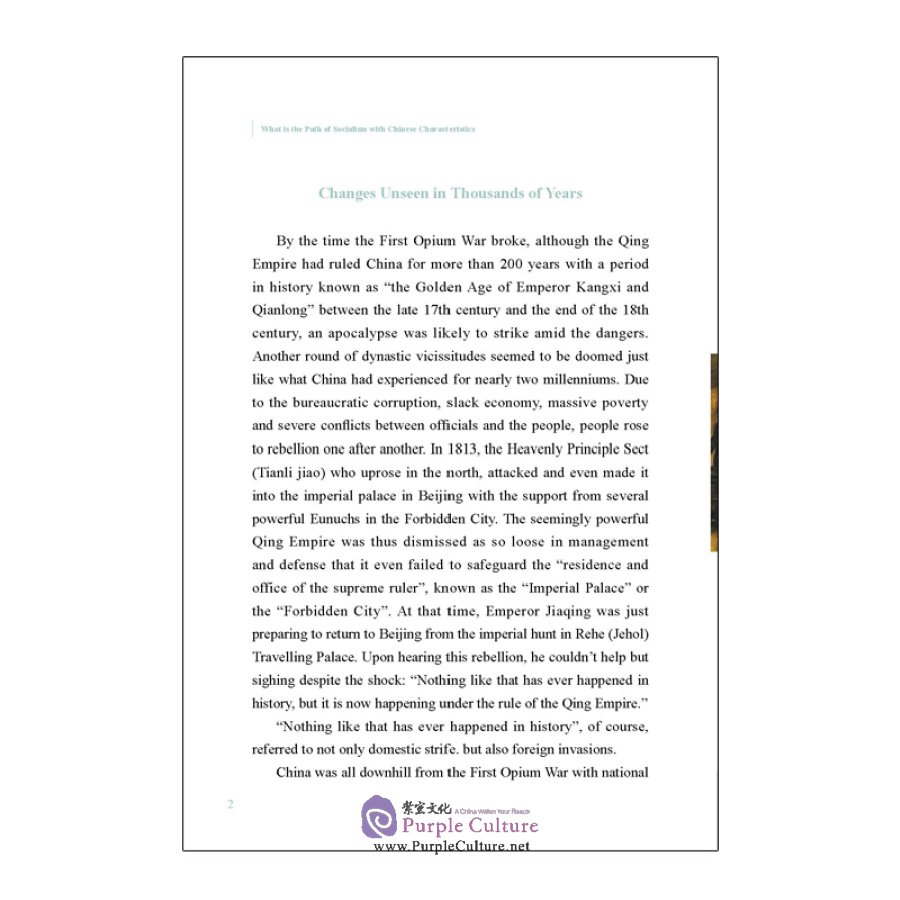The 21st century has witnessed a fast-rising China, with various events and phenomena labeled "Chinese" being more frequently heard of and written about. For instance, "Chinese Experience", "Chinese Speed", "Chinese Miracle", "Chinese Wisdom", "Chinese Spirits", "Chinese Power", "Chinese Responsibility", "Chinese Approach" and "China Model", etc. The Chinese people are now living a well-off life that was unattainable thousands of years ago. For more than a decade, China has become the world's second largest economy and found itself approaching the center of the world stage. Hence, people of insight could never ignore the changes taking place in China and the influences China is exerting in the world nowadays, whether they like it or not. For example, Niall Ferguson and Moritz Schularick, professors from the western world, coined the word "Chimerica" to highlight the development of China, which has been interpreted as "zhong mei guo (China-America State)" or "zhong mei gong tong ti (China-American Community)" in Chinese. Regardless of what they are trying to express or to expect by this term, more and more people are now comparing China with the United States, the world's No.1 power, and the Sino-US relationship has become the most important bilateral relationship in the world. All these have shown that, China's power, whether it is hard power or soft power, perhaps with a bit of smart power, has always fueled interest and discussion among people with some even considering the 21st century to be the century of China. n
But things were quite different in China over a century ago, dating back to 1900, as China entered the 26th year of Guangxu Emperor's Rein, which is the beginning of the 20th century according to the Common Era (C.E.). It was in this year that the Siege of the International Legations occurred and the Eight-Nation Alliance captured Beijing, a historical period of humiliation engraved in the depth of Chinese memory. For example, in April, 1990, given that the G7 had intended to sanction China then, Comrade Deng Xiaoping recalled the siege in a sentiment while talking with foreign visitors, "When I heard that the G-7 Summit had decided to impose sanctions on China, my thoughts flash back to the year of 1900, when the allied forces of the eight powers invaded China." Therefore, it can be said that at the beginning of the 20th century, what was unfolding before the Chinese nation was so miserable and tragic that people had no hope for a bright and prosperous future, let alone foreseeing that China would "stand up", "grow rich" and "get strong" in just a century. Then what led China from suffering to glory, and from poverty to prosperity in only one hundred years? Obviously, the dramatic transformation should be credited to countless Chinese who had explored, struggled and sacrificed, with sweat, tears and even blood. These people belonged to a common group, the Communist Party of China (CPC). For generations, the CPC have followed the footsteps of their predecessors without changing their original aspirations or being confined by the old path. Ultimately, they succeeded in leading the Chinese people to blaze a new path for building, reforming, and developing a new China which has far reaching influence in the history of China and even the world. n
This way, known as the path of socialism with Chinese characteristics, is worth our review and comment. For example, how was it conceived and how did it evolve? What are the major elements, characteristics, and advantages of this path? What achievements and obstacles were presented along this path? What profound influences has it made both at home and abroad?


